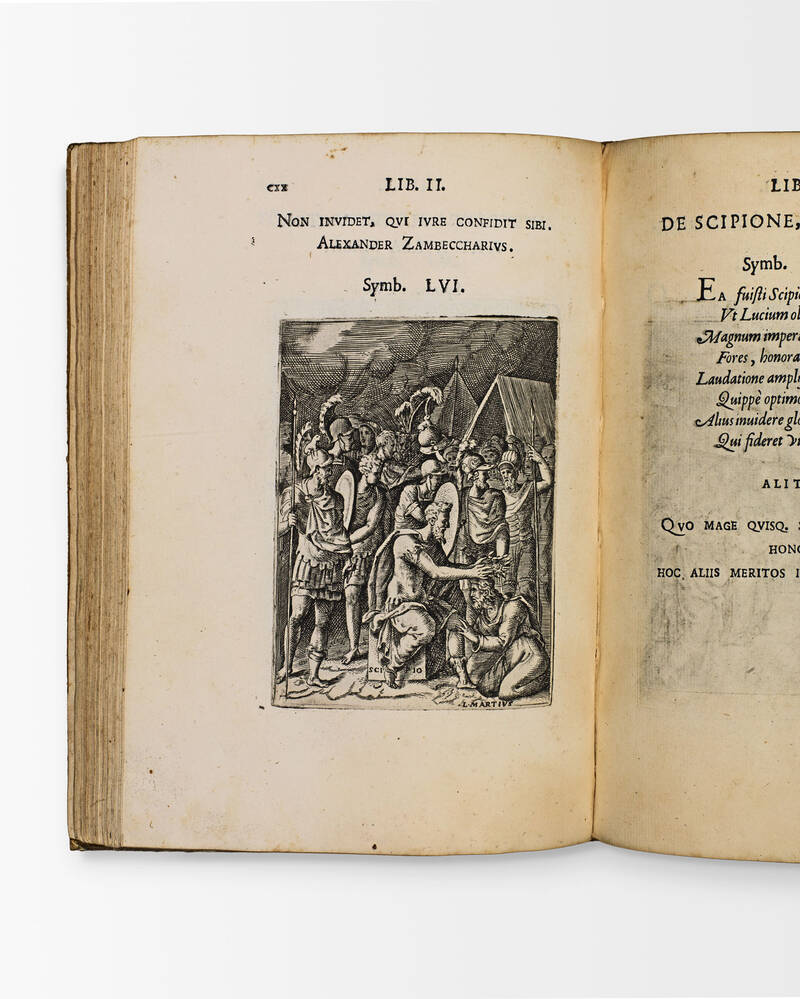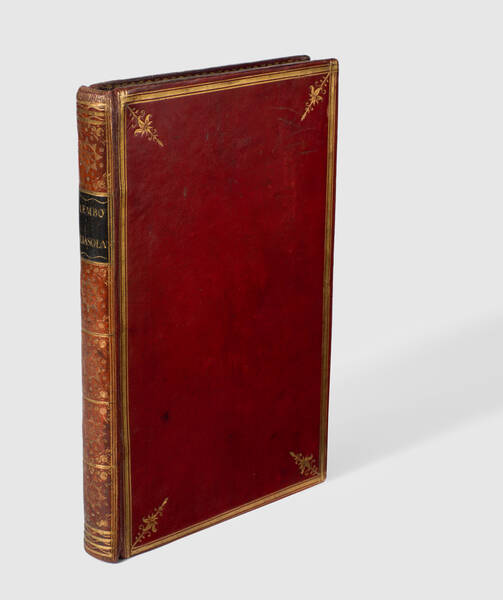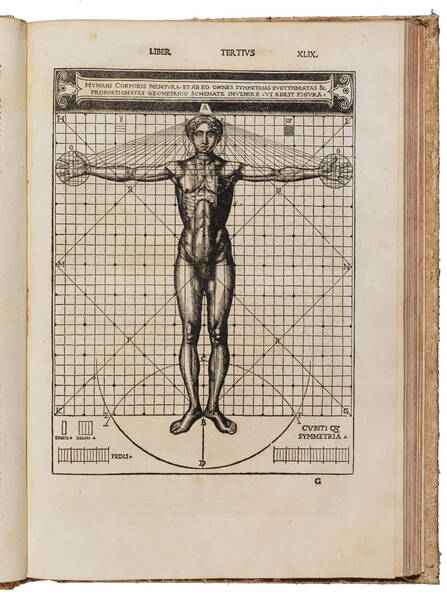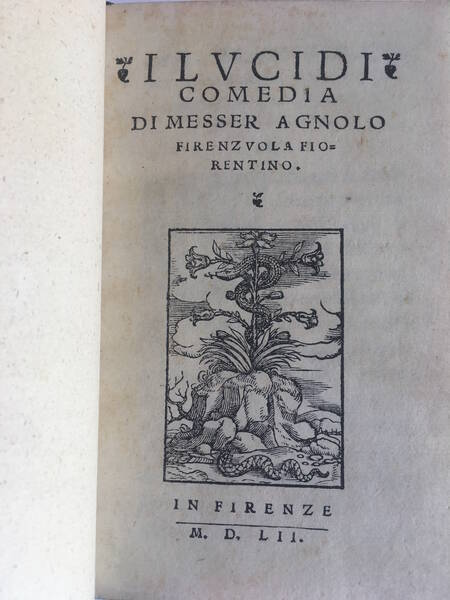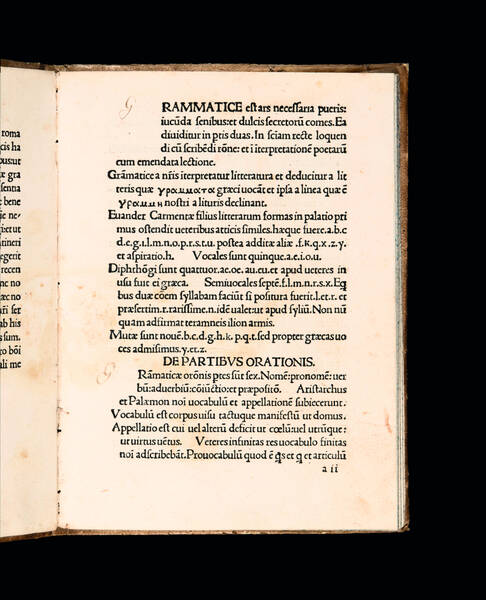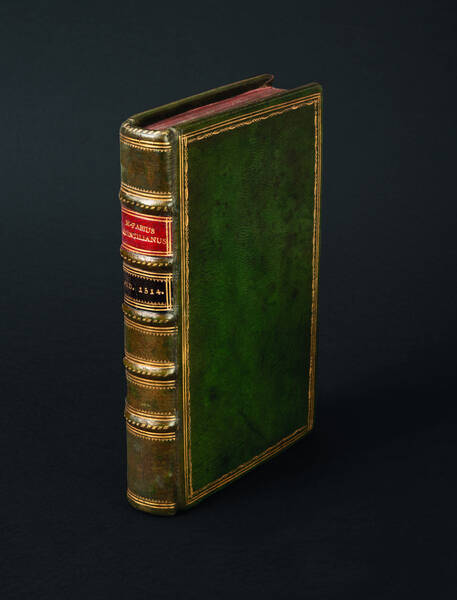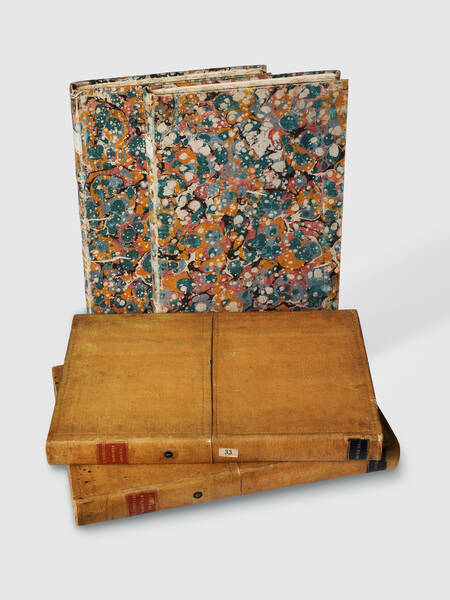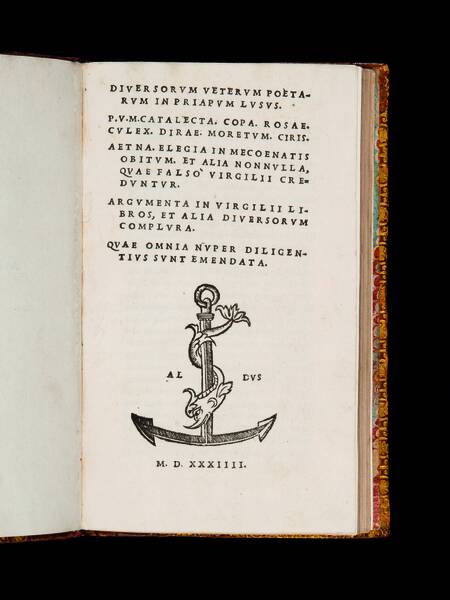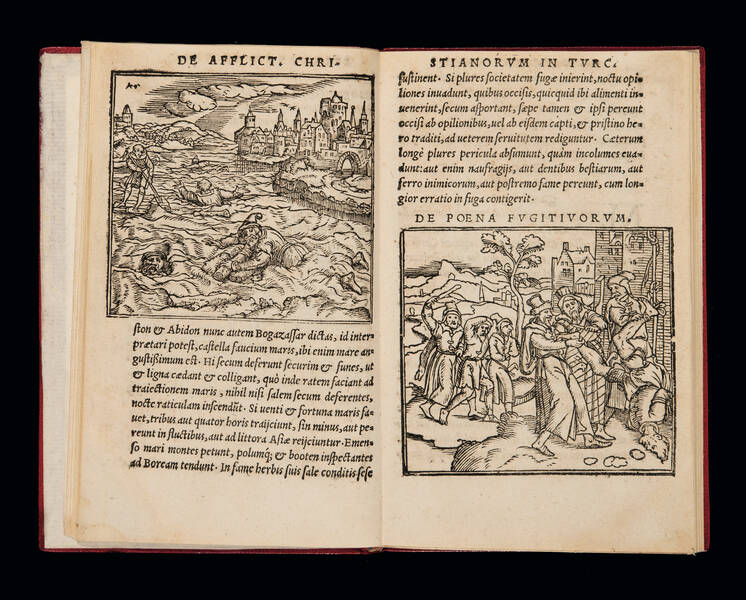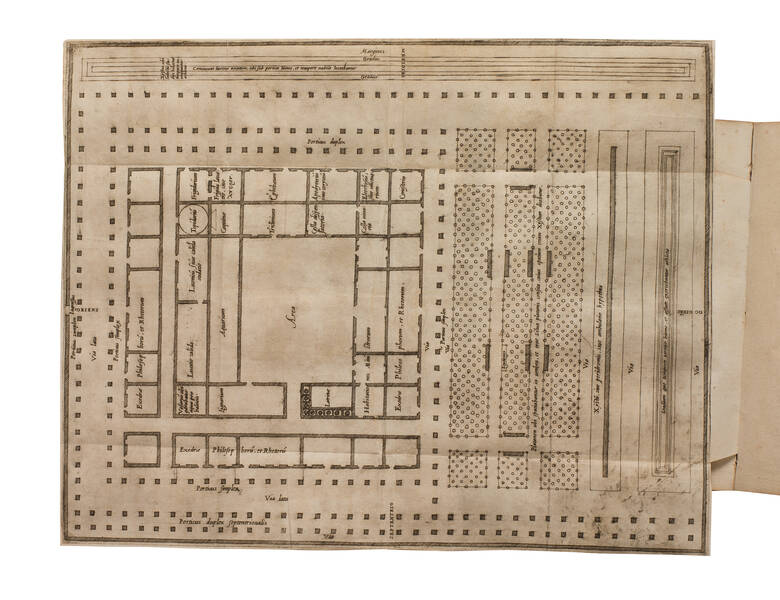BOCCHI, Achille. Symbolicarum quaestionum, de universo genere quas serio ludebat, libri quinque.
Bologna, apud Societatem Typographiae Bononiensis., 1574.Quarto (205 x 142 mm.), [24] leaves, CCCLVIII pages, xylographic printer’s device on title-page, with an allegorical personification of the city of Bologna and 151 engraved emblems by Giulio Bonasone, after drawings by Prospero Fontana and Parmigianino, retouched for this second edition by Agostino Carracci. A few spots, marginal foxing, upper portion of title page cut away (1 cm.), overall a fine copy in contemporary limp vellum.
Second edition of Achille Bocchi’s famous Symbolicarum quaestionum (first published in 1555), one of the most fascinating and renowned emblem books of the Italian Renaissance. Achille Bocchi (1488-1562) was a Bolognese humanist, active as a lecturer, professor and historian at the Bologna university, and a high standing personality in the cultural milieu of this city. He also founded an eponymous Academy, the Accademia Bocchiana, which included among its members professors of the Studium, philosophers and humanists, and animated the city’s culture for nearly a decade, between 1546 and 1556. The Academy had its own print and Bocchi’s emblem book was probably the first work published within it; also the second posthumous edition holds its own typographic record, as it stands as the first publication of the Bolognese Typographic Society, founded in 1572. The Symbolicarum quaestionum libri are composed by 151 symbols, each of whom consists of a title, a dedication, a Latin or Greek epigram, and an allegorical illustration on copperplate. In this way, with regard to its general conception and structure, the work owes a great debt to Andrea Alciato’s celebrated Emblemata. Prospero Fontana, to whom the great majority of the illustrations is to be ascribed, was a Bolognese mannerist painter, and was considered one of the best portrait interpreters of his time. He was active in Genoa, Rome, and Bologna, where he opened the important painting school that the Carracci cousins attended in their youth. A great amount of the iconographic motifs represented in the book bear the mark of the Oriental symbolism, which was mostly mediated by Filippo Fasanini’s translation of Horapollo’s Hieroglyphica and by Pierio Valeriano’s Hieroglyphica. Moreover, one can count many mystical and biblical motifs, as well as motifs derived from Petrarch or Alexandrine erotic poetry. Bocchi’s work exerted a strong influence on later emblem writers, literary works, and artists. Many of Bocchi’s symbols were especially reproduced and imitated in emblem books of the 17th century, like those by Otto van Veen and John Marston.
Adams B-2194; Brunet I, 1021; Heckscher - Sherman, Emblem Books, 107; Landwehr, Romanic, 162; Mortimer, Italian, 76; Praz, 276. A. Rotondò, in DBI 11 (1969).
Other Books
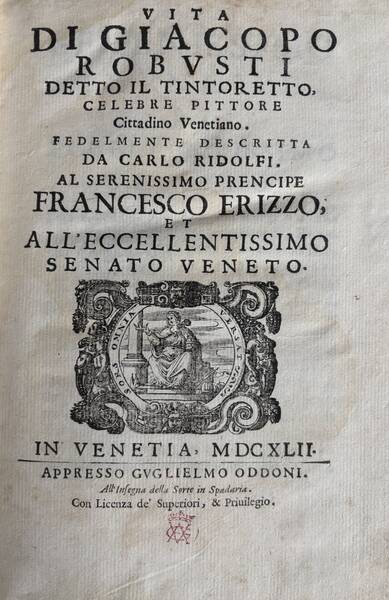
RIDOLFI, Carlo
Vita di Giacopo Robusti detto il Tintoretto, celebre pittore, cittadino venetiano.
€ 2.500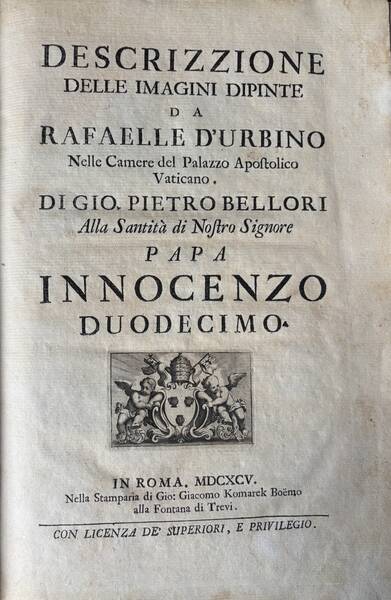
BELLORI, Giovanni Pietro
Descrizzione delle immagini dipinte da Rafaelle d'Urbino nelle camere del palazzo Apostolico Vaticano.
€ 2.500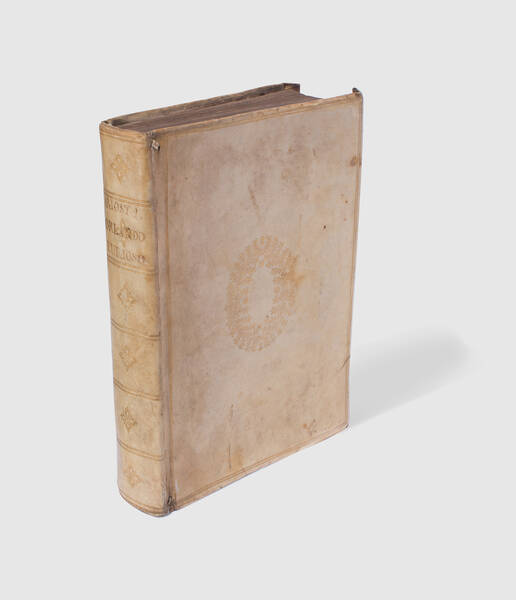
ARIOSTO, Ludovico
Orlando furioso di m. Lodouico Ariosto nuouamente adornato di figure di rame da Girolamo Porro padouano et di altre cose che saranno notate nella...
SOLD OUT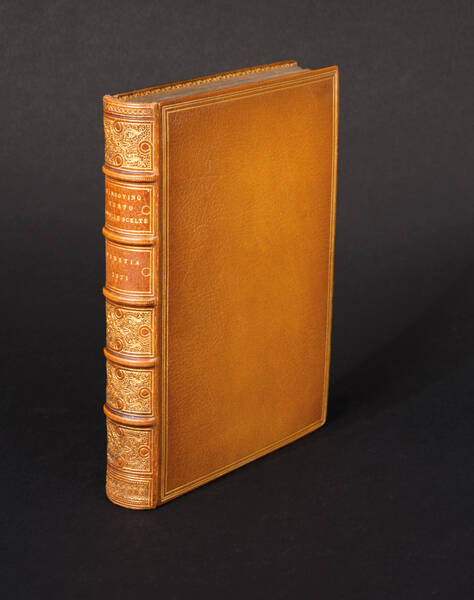
SANSOVINO, Francesco
Cento nouelle scelte da piu nobili scrittori della lingua volgare, con l'aggiunta di cento altre nouelle antiche, non pur belle per inuentione, ma...
€ 3.600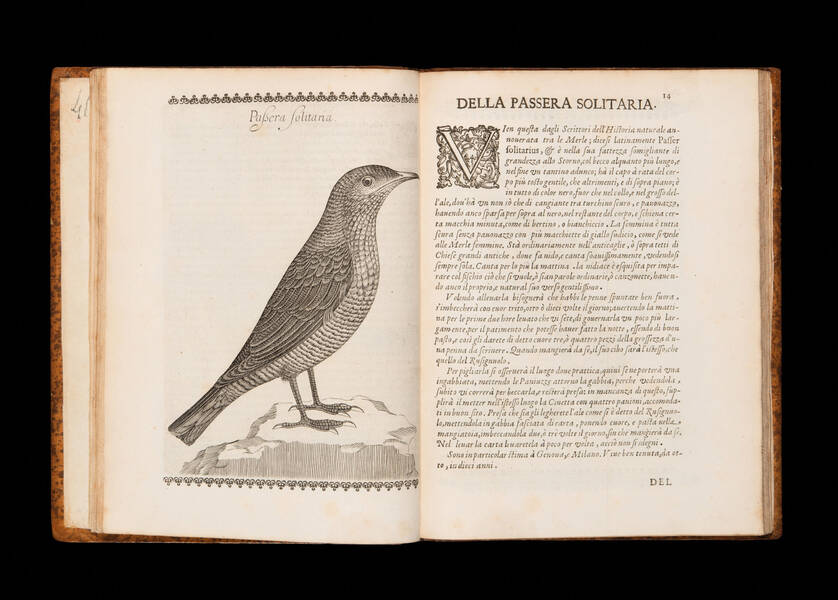
OLINA, Giovanni Pietro
Vccelliera ouero discorso della natura, e proprieta di diuersi vccelli, e in particolare di que' che cantano. Con il modo di prendergli, conoscergli,...
€ 6.000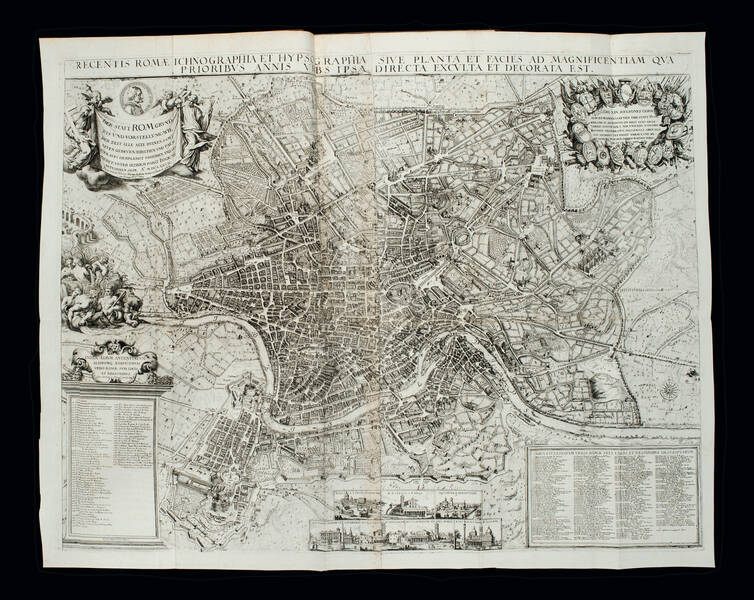
SANDRART, Joachim von
Romae antiquæ et novæ theatrum; sive, genuina ac vera urbis, juxta varios ejusdem status, delineatio topographica.
SOLD OUT![MORE, Sir Thomas. De optimo reip. statu deque nova insula Utopia ... Epigrammata [with:]DESIDERIUS ERASMUS. Epigrammata. MORE, Sir Thomas. De optimo reip. statu deque nova insula Utopia ... Epigrammata [with:]DESIDERIUS ERASMUS. Epigrammata.](https://www.medariquier.com/typo3temp/pics/9344bb41f5.jpg)
MORE, Sir Thomas; DESIDERIUS ERASMUS
MORE, Sir Thomas. De optimo reip. statu deque nova insula Utopia ... Epigrammata [with:] DESIDERIUS ERASMUS. Epigrammata.
€ 50.000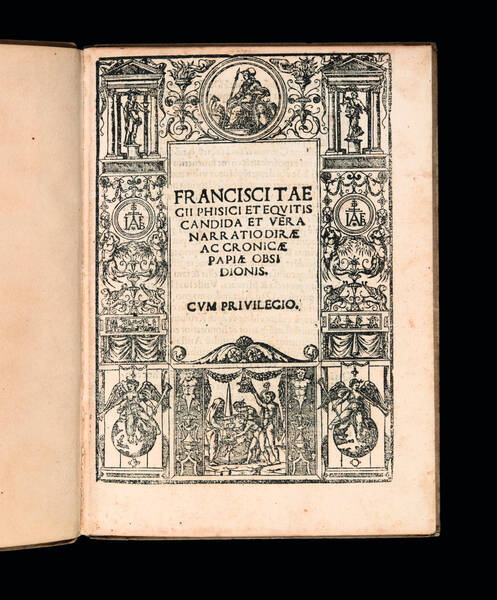
TAEGIO, Francesco
Frencisci Taegii phisici et equitis Candida et vera narratio dirae ac cronicae Papiae obsidionis.
€ 30.000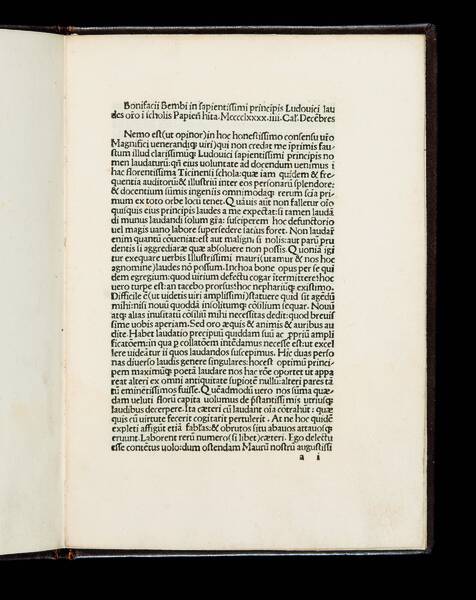
BEMBO, Bonifacio
In sapientissimi principis Ludovici laudes or(ati)o i(n) scholis Papien(sibus) h(ab)ita.
SOLD OUTMEDA RIQUIER rare books ltd.
4 Bury Street St James's
SW1Y 6AB London
Phone +44 (0) 7770457377
info@medariquier.com
